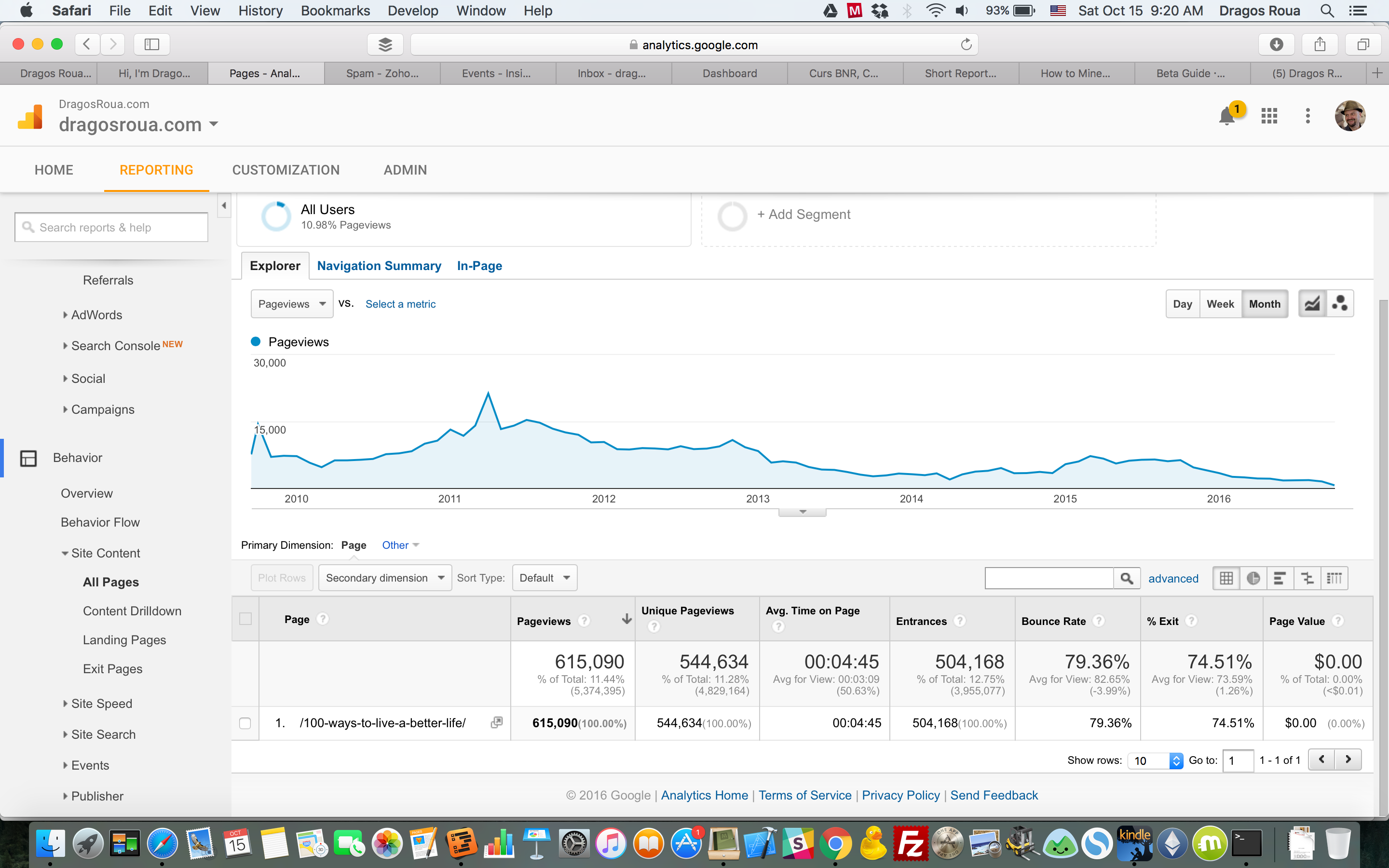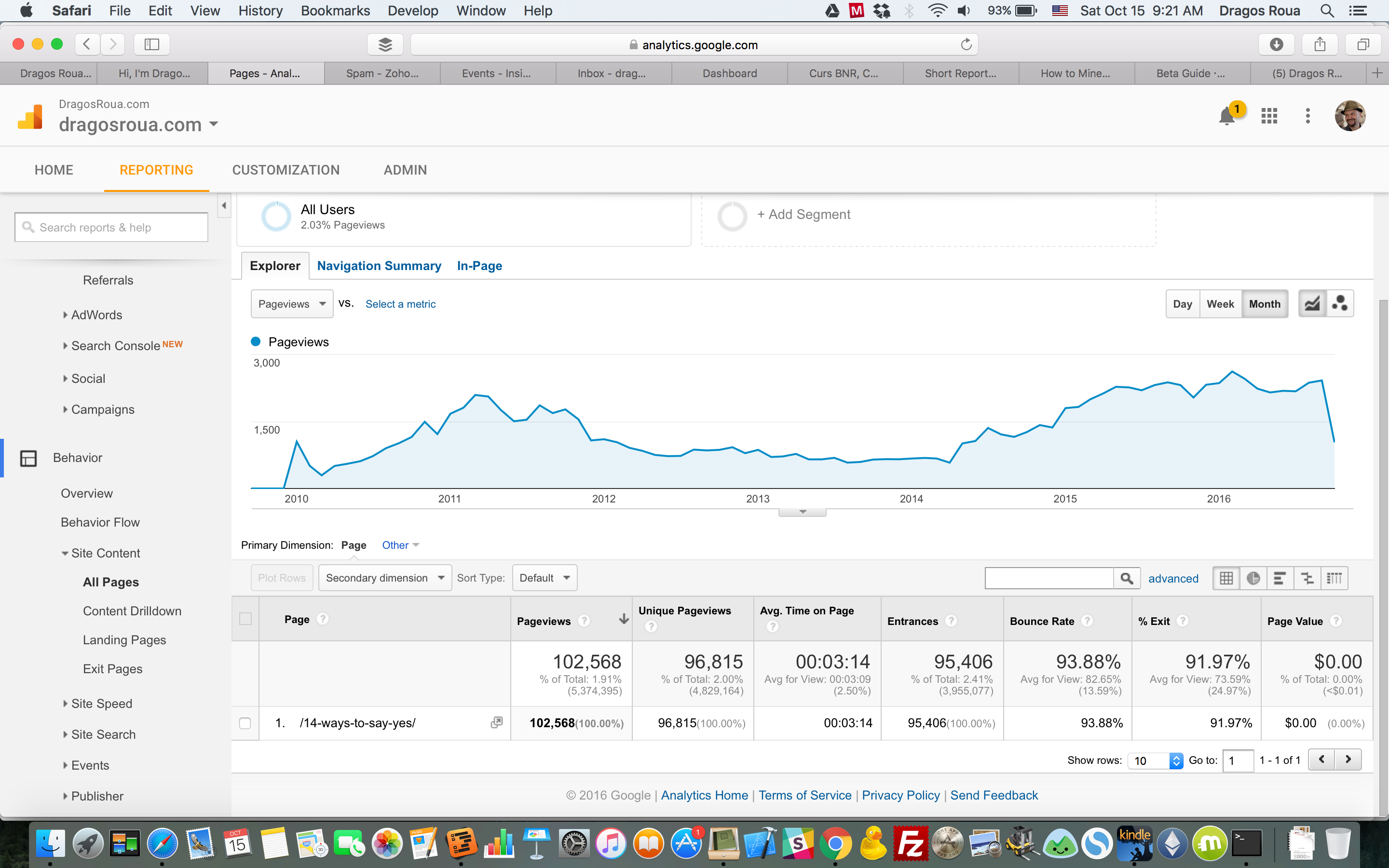When I decided to test Steemit for 30 days there were a few things I didn’t know about it. The economics were quite foggy (but now they’re getting clearer), the curation part was somehow ignored (but now I see it as an important part of the whole project) and I wasn’t aware of the whole ecosystem of websites built on top of the blockchain to make everything easier: steemstats.com, streemian.com, steemwhales.com and many others.
But out of the things I didn’t know at at time (and it was an assumed decision to dive in with limited knowledge) there is one that stands out. It is a thing so important that may create the cause for Steemit implosion. I stand by my words. If there’s something that may bring the whole beautiful idea behind Steem down, then this is it. It’s not the price spiraling down (it’s quite understandable, after the Jully bubble and given the very, very low volume), it’s not even the so-called dumping by @ned and @dan (seriously, folks, can you start minding your money instead worrying about other people’s money? It’s their Steem, they can do whatever they want with it, just chill).
This thing is the fact that after 30 days you stop getting paid for your content. After 30 days, you can’t even edit your post anymore (the posts gets archived, as it’s stated in the release notes for the latest Steemit version, [0.14.2] (https://github.com/steemit/steem/releases/tag/v0.14.2).
Now that’s a potentially huge deal breaker. Let me explain why.
Timeless Content versus Timely Content
Timeless content is content that is not created around a certain time event. It’s not news. It’s not an announcement about something that happened or will happen. It’s content that may be read 3-4-5 years from the moment of creation and still offer some value. One example of this type of content would be Wikipedia. But there are many others: poetry, prose, art, photography or any other content that deals with evergreen topics, from self-help to relationships.
Timely content is content that is created because of a certain time event. It’s news. It’s an announcement about something that happened or will happen. Once the specific event is consumed, that content becomes irrelevant. It won’t be useful to anyone 3-4-5 years after the moment of creation. Who cares about a Madonna concert that happened 4 years ago?
At this moment, Steemit is completely locking out timeless content and it favors 100% timely content. By archiving the posts after 30 days and stopping the payment process, it renders that content irrelevant after that time window.
So your content pays off on Steemit only for 30 days. That changes everything. I leave apart the fact that this should be very clearly stated in the website, like “write and get paid , but only for 30 days”. It’s a very young project, things are changing, etc, etc. But in time, this could become a serious liability, the type that can get Steemit to court.
That also means that even the curation process is not designed to create a meaningful repository of content but merely to push on the front page the things that will attract more eyeballs. It favors memes, clickbait and very short time windows for the front page.
Even the title for this article had to include some clickbait, otherwise it wouldn’t have attracted any attention.
Don’t get me wrong, there’s nothing intrinsically bad with that. 9gag is a meme sites and it’s doing well. To a certain point, even reddit is a site where the spectacular is favored instead of the useful.
But that changes entirely the type of content you can consume on Steemit and the amount of financial value you can get.
I’m very sorry to say that, but in this new scenario (new for me, anyway) Steemit is actually a failed project. It will end up paying peanuts to a few stay at home kids that are digging the internet for memes.
Not to mention the implications for the monetary system behind it. There is this very stark contradiction between favoring volatile content and locking contributors in for 2 years. It’s like they’re saying: “you should stay glued to your computer, hunting for funny content that can be consumed in the subway, and you should do this for at least two years”. The value of Steem in two years may be well close to the value of a blank piece of paper.
Long Tail Content versus FOMO
This strategy flaw in the positioning of Steemit is more profound. I can see the fight they’re fighting trying to find a sweet spot where they could generate and retain the maximum amount of value.
Because there are a couple of trends in social media today that are fragmenting the market big time, to the point of disruption. I see two schools of thought: one is about “long tail content” and the other one is about FOMO (fear of missing out).
In the “long tail content” school of thought, the social network relies on the persistency of the content in order to create user retention. You go on Facebook because you know your favorite pages will post interesting stuff and you know it will be there for you to consume it anytime. Even if you missed something in your feed, you can go directly to that page and read what you missed. It’s there. It’s not going anywhere. It’s not going to be deleted.
In the “FOMO” school of thought, prominently represented by Snapchat, the social network relies on the volatility of content in order to create user engagement. You go to Snapchat because you know the content won’t be there tomorrow an you’re afraid you’re missing out. If you don’t go today, you’ll miss Gary Vaynerchuk rants about entrepreneurship and hustle and that will make you feel sad.
Somewhere in the middle is Steemit. They’re forced to have content persistency (because everything in the blockchain lives forever) but they put value only on the FOMO types of interactions. In my opinion, this spot is a losing one. I’m gonna show you why.
Real World Examples Of Timeless Content
Here are a few real screenshots of some of my posts, written back in 2009-2010.

As you can see, even after 5 years, I still get around 1500-2000 unique users per month, for a single post.

This is even more interesting, because the traffic is actually getting higher as the post goes older.
If I would put AdSense on these pages, I would make money (it’s a personal choice not to put AdSense, because I monetize differently, but AdSense is the easiest way to make my point). And I will make money simply because some of the people consuming my content will also be interested in some of the ads. The click ratio is infinitesimal and advertising itself is not a very productive way to monetize, but that’s not the point. The point is that, in the “long tail content” strategy, I still make money without extra effort. And this is legit money. The economics behind it is ok. Everybody gets some value.
The compound effect states that, if I pile up small gains every day, I will become a millionaire. And that’s true.
In other words, the chances for me to win the lottery in 10 years, versus the chances of me becoming millionaire in 10 years by the means of the compound effect are greatly in favor of the compound effect.
Alas, Steemit is playing the lottery card. Give your best in a 30 days window and maybe you will make it big. We don’t care what happens after 30 days. The content is there because it’s in the blockchain but we don’t care and we don’t let other users to pay you for that.
The Step By Step Process Of Steem Locking Itself Out
What follows is a parody, and by no means I encourage anybody to do this. The goal of the next part is to raise a flag and find solutions.
Step 1: On the 29th day after each article, go to that article and modify it like this: Title: “a”. Body: “b”. Tags: “c”,”d”,”e”. Click “Update”.
That’s it. That’s the only step.
You took your money over the 30 days window, now you take your content (because it’s yours, you know) and publish it somewhere else: Medium, Facebook your blog, etc.
What’s left of Steemit if all 35.000 active users will do this now? (I know there are over 100.000 users but I personally think 65.000 are bots).
Potential Solutions
Here are my thoughts on this one and I really encourage founders and people from the community to give me some feedback or come up with better ideas:
decrease the power of a vote proportionally with the publication date of an article. In the 24 hours it has a certain ratio, then it decreases for the next 30 days, then it decreases again for the next 2 years and so on. 2 years is the time in which you can completely dry up your Steem Power so it makes sense to retain a certain voting power while you still have SP in your account. But I think even after 10 years the vote should be relevant. The analogy is with a vintage car: you still like a vintage car, even if you cannot ride with it. There is appreciation there. So the vote may be worth 0.00000001 of a Steem, but still be there.
implement google analytics in articles (or any other possibility to track your own content) in order to know what works for the long term and what doesn’t. Each platform has a different type of audience and authors need to know how to better serve their readers. This can be done at the website level, it doesn't need to sit in the blockchain.
show publicly the versions of an article with an easy visual indicator of the difference between the original and the current. For instance, an article who was heavily edited, to the point where it’s completely different form the original, should have a red badge: “attention, this version is 79% different from the original”. It will be a way to indicate to readers that the content is not representative anymore.
The Opportunity Cost
The real cost of Steemit failing is not financial. As a truly revolutionary project, it can have a huge impact over the entire content production on this planet. It can heavily disrupt businesses like Facebook or Twitter. If it fails, it will make the process of evolution in this area much slower, because it may act as an example of “this is not possible, you saw what happened to Steemit, stay with us, the centralized mammoths who are taking all the profits while selling your content to ruthless advertisers invading your privacy.”
If you resonate with this article, please resteemit, it doesn’t consume your voting power and helps other people to better understand the intricacies of Steemit.
I'm a serial entrepreneur, blogger and ultrarunner. You can find me mainly on my blog at Dragos Roua where I write about productivity, business, relationships and running.

